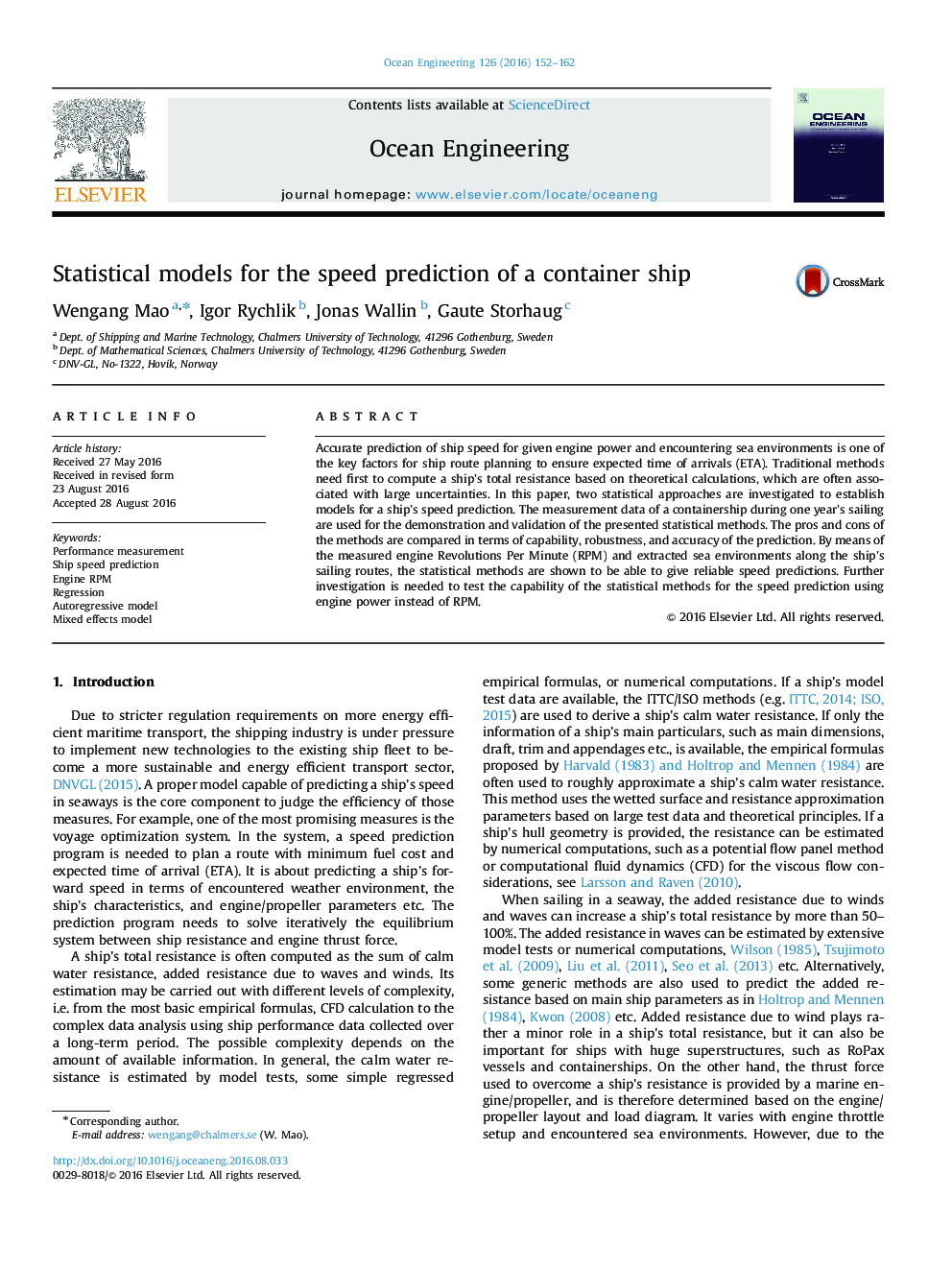| Article ID | Journal | Published Year | Pages | File Type |
|---|---|---|---|---|
| 8063775 | Ocean Engineering | 2016 | 11 Pages |
Abstract
Accurate prediction of ship speed for given engine power and encountering sea environments is one of the key factors for ship route planning to ensure expected time of arrivals (ETA). Traditional methods need first to compute a ship's total resistance based on theoretical calculations, which are often associated with large uncertainties. In this paper, two statistical approaches are investigated to establish models for a ship's speed prediction. The measurement data of a containership during one year's sailing are used for the demonstration and validation of the presented statistical methods. The pros and cons of the methods are compared in terms of capability, robustness, and accuracy of the prediction. By means of the measured engine Revolutions Per Minute (RPM) and extracted sea environments along the ship's sailing routes, the statistical methods are shown to be able to give reliable speed predictions. Further investigation is needed to test the capability of the statistical methods for the speed prediction using engine power instead of RPM.
Related Topics
Physical Sciences and Engineering
Engineering
Ocean Engineering
Authors
Wengang Mao, Igor Rychlik, Jonas Wallin, Gaute Storhaug,
